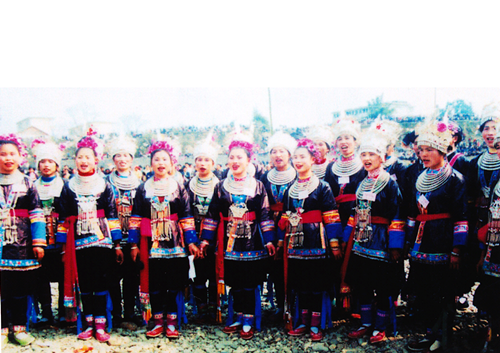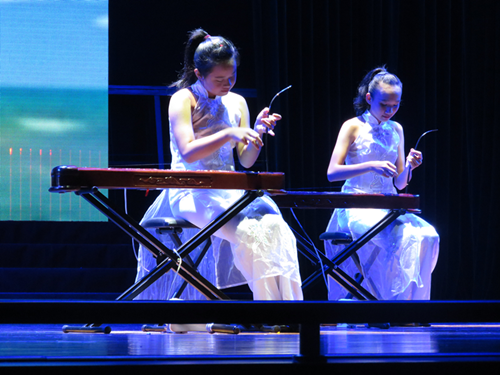National Culture Heritages in Guangxi (music)
1. Kam Grand Choirs - Treasures of Dong Minority People

Kam Grand Choirs, also named Grand Choeur des Kam or Gal Laox, is a natural chorus with multi-tones that is performed without command and accompaniment. It belongs to the Dong ethnic group and has more than 2,500 years of history. Kam Grand Choirs was listed as a national intangible cultural heritage in 2006 and as a UNESCO Intangible Cultural Heritage in 2009.
Kam Greand Choirs convey the history and culture of the Dong with their unique singing style and special organization. It is not only a musical art, but also an important part of the social structure, marriage and love, cultural heritage, as well as the spiritual life of the Dong. It has a wide range of repertoires and content.
This kind of song is usually sung by people at festivals to express feelings and praise nature.
2. Napo Zhuang Folk Songs
Napo Zhuang, also known as "Heiyizhuang," is a unique ethnic group among the Zhuang. They are named for their all-black clothes. They mainly live in Napo county, Guangxi Zhuang autonomous region, which is located on the border between China and Vietnam. Napo Zhuang folk songs are folk songs that they have sung from generation to generation. In its long history, Heiyizhuang still preserves ancient, complete, and colorful folk songs.
On May 20, 2006, Napo Zhuang folk songs were listed in the first batch of national intangible cultural heritage list with the approval of the State Council.
Napo Zhuang folk songs have a long history, diverse forms, and rich content. Besides the functions of communication, education, and entertainment, Napo Zhuang folk songs have historical, academic, artistic, and practical values. They are the relics of the ancient ballad culture of the Zhuang nationality.
Napo Zhuang folk songs mainly include narrative songs of myths and legends, biographies of characters, as well as stories about environmental changes and historical events. There are songs of bitterness, agricultural songs, eulogies for beautiful scenery, ritual songs, and sacrificial songs. The most abundant are love songs, which contain more than 20 kinds of content, such as lyrics about first love, loyalty, separation, exhortation, regret, nostalgia, reunion, and bitterness.
3. Single-stringed Fiddle Art

Single-stringed fiddle art is the treasure of the Jing, an ethnic group that predominantly come from three islands in Guangxi Zhuang autonomous region. It includes the art of making a single-stringed fiddle and the art of playing a single-stringed fiddle. The Jing mainly live in Dongxing, Guangxi Zhuang autonomous region.
The Jing like to sing antiphonal songs after they come back from fishing. The songs can be grouped according to its content as ballads, songs about labor, love songs, Pan'ge songs about traditional customs, and songs about religions.
The single-stringed fiddle is one of the Jing's favorite folk musical instruments. Also known as Gourd Ladle Fiddle, the single-stringed fiddle is 0.8 m long and shaped like a wood oblong box. It is made of a kind of mottled bamboo. The player holds the fiddle with his right hand and plucks the strings with a tiny piece of bamboo in his left hand, being able to produce four notes and one grace note that are mild and pleasant. The tone it produces is very pure and elegant, with a wide range and particular style. It is a symbol of Jing culture.
It is usually played in the Changha as an accompanying instrument and is also good for solo performances. The most popular melodies are "High Mountains, Flowing Streams" and "Riding on a Horse."
On May 23, 2011, Single-stringed Fiddle Art was approved by the State Council as a national intangible cultural heritage.














